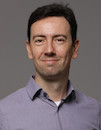Remote Sensing
Data is displayed for academic year: 2023./2024.
Course Description
Remote sensing is the term for a set of methods for gathering information about an object or phenomenon without physical contact with that object. Some of the applications of remote sensing are imaging the Earth from space, deep probing of the ocean, monitoring the effect of climate change on glaciers, ultrasound pregnancy monitoring, and the most famous technologies are radar, lidar, MRI (Magnetic Resonance Imaging), PET (Positron Emission) Tomography) and many others. The advantages of remote sensing are that it does not disturb the object or the area of observation, and it also enables measurements in remote, inaccessible and dangerous areas. Remote sensing connects different fields of electrical engineering, computing and the field of mathematical modeling with the aim of improving existing methods and developing future innovative applications. The course will be conducted by combining theoretical and practical aspects of remote sensing with the aim of better connecting and understanding new concepts and technologies. In this way, the knowledge of mathematical modeling, signal processing and electromagnetism will be connected and extended, with a focus on the development and demonstration of microwave imaging and synthetic aperture radar ideas, and the application of adequate algorithms for image reconstruction on practical examples.
Study Programmes
University graduate
[FER3-HR] Audio Technologies and Electroacoustics - profile
Elective Courses
(1. semester)
(3. semester)
[FER3-HR] Communication and Space Technologies - profile
Core-elective course
(1. semester)
[FER3-HR] Computational Modelling in Engineering - profile
Elective Courses
(1. semester)
(3. semester)
Elective Courses of the Profile
(3. semester)
[FER3-HR] Computer Engineering - profile
Elective Courses
(1. semester)
(3. semester)
[FER3-HR] Computer Science - profile
Elective Courses
(1. semester)
(3. semester)
[FER3-HR] Control Systems and Robotics - profile
Elective Courses
(1. semester)
(3. semester)
[FER3-HR] Data Science - profile
Elective Courses
(1. semester)
(3. semester)
[FER3-HR] Electrical Power Engineering - profile
Elective Courses
(1. semester)
(3. semester)
[FER3-HR] Electric Machines, Drives and Automation - profile
Elective Courses
(1. semester)
(3. semester)
[FER3-HR] Electronic and Computer Engineering - profile
Elective Courses
(1. semester)
(3. semester)
[FER3-HR] Electronics - profile
Elective Courses
(1. semester)
(3. semester)
[FER3-HR] Information and Communication Engineering - profile
Elective Courses
(1. semester)
(3. semester)
Elective Courses of the Profile
(1. semester)
Elective Coursesof the Profile
(3. semester)
[FER3-HR] Network Science - profile
Elective Courses
(1. semester)
(3. semester)
[FER3-HR] Software Engineering and Information Systems - profile
Elective Courses
(1. semester)
(3. semester)
Learning Outcomes
- Describe remote sensing applications
- Review electromagnetic scattering and applications
- Combine electromagnetic waves and signal processing ideas
- Review Inverse Synthetic-Aperture radar and Synthetic-Aperture radar ideas
- Explain main image reconstruction algorithms implementations
- Use main image reconstruction algorithms
- Compare main image reconstruction algorithms and their implementations
Forms of Teaching
Lectures
-
Independent assignments-
Laboratory-
Grading Method
| Continuous Assessment | Exam | |||||
|---|---|---|---|---|---|---|
| Type | Threshold | Percent of Grade | Threshold | Percent of Grade | ||
| Homeworks | 0 % | 40 % | 0 % | 0 % | ||
| Seminar/Project | 50 % | 30 % | 0 % | 0 % | ||
| Mid Term Exam: Written | 25 % | 30 % | 0 % | |||
| Exam: Written | 25 % | 50 % | ||||
| Exam: Oral | 50 % | |||||
Week by Week Schedule
- Introduction to remote sensing. Electromagnetic waves and electromagnetic spectrum applicable in remote sensing.
- Fourier series and applications in signal processing.
- Discrete Fourier Transform.
- Fourier transform.
- Analytical signal and Hilbert transform.
- Electromagnetic waves.
- Synthetic aperture radar (SAR).
- Midterm.
- -
- -
- FMCW radar.
- Stationary phase method.
- -
- -
- Project.
Literature
For students
General
ID 240624
Winter semester
5 ECTS
L2 English Level
L1 e-Learning
45 Lectures
0 Seminar
0 Exercises
6 Laboratory exercises
0 Project laboratory
0 Physical education excercises
Grading System
85 Excellent
75 Very Good
60 Good
50 Sufficient


 Pristupačnost
Pristupačnost
